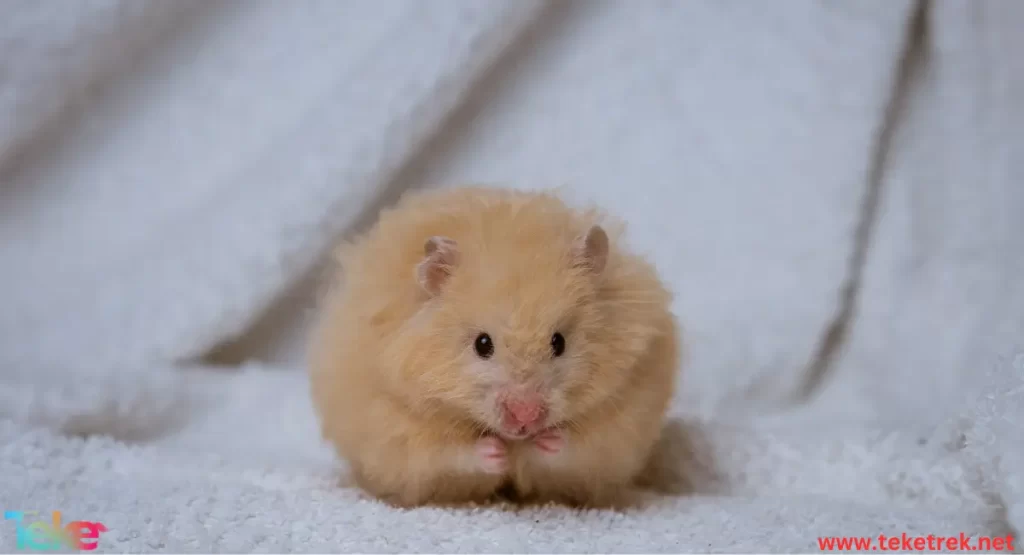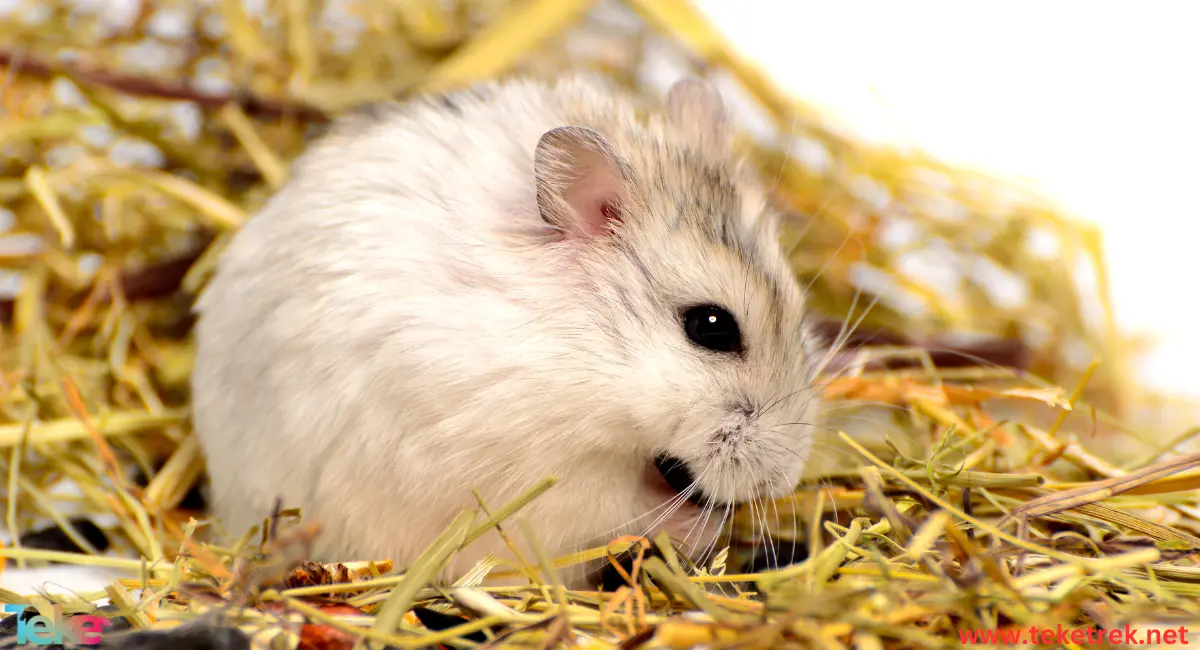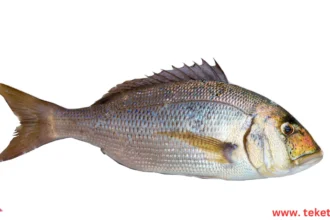The hamster is a small animal belonging to the rodent family, renowned for its small size and cute appearance. It is characterized by sharp teeth and cheek pouches that can store food. Hamsters are common household pets, known for their playful and active nature.
Together in this article, we will get to know this type of pet, explore how to raise and breed it, discuss its preferred foods, and delve into its most important species. Stay tuned as we continue reading this article.
About the hamster
The hamster is a subfamily of rodents, resembling mice in appearance. The subfamily includes 25 species divided into 6 genera.
Hamster’s physical features
- The hamster is a small animal characterized by its round and dwarfed body, with small ears and large shiny eyes. It has soft, medium-length fur, and comes in various colors such as brown, white, gray, and black.
- It is characterized by a short and bushy tail and large cheeks capable of storing food.
- The hamster has a tail much shorter than its body, with flattened feet, short legs, and sharp ears.

- The length of a hamster ranges from 50 to 340 millimeters, while the tail length varies from 7 to 106 millimeters.
- The weight of a hamster ranges from 25 to 150 grams, depending on the species and type.
- The spinal column consists of 13 thoracic vertebrae and 6 lumbar vertebrae.
The geographic distribution of the hamster
- The distribution of hamsters extends from Central Europe to Siberia, Mongolia, North Korea, and northern China, and from Syria to Pakistan in the south.
- Hamsters inhabit deserts, mountain slopes, low trees, river valleys, and meadows.
- Some of them live on farms, where each species is concentrated in a specific area. For example, the European hamster inhabits Central Europe, western Siberia, and northwest China, while the Syrian hamster lives in a limited area in northern Syria only.
Hamster food
His balanced diet contains:
- Seeds and Grains: Such as wheat seeds, oats, corn, and oil seeds.
- Fresh Vegetables: Like carrots, cucumber, cabbage, and green peppers.
- Fruits: Such as apples, watermelon, strawberries, and kiwi, but in limited quantities due to their high sugar content.
- Proteins: Some proteins can be added by giving pieces of boiled eggs or cooked lean meat without fat.
- Milk and Water: Clean water should always be provided for drinking.
- It is important to avoid giving hamsters foods containing added sugars or large amounts of salt. Also, avoid giving them toxic foods such as chocolate, onions, and garlic.
The reason behind naming the hamster
- The origin of the word “hamster” goes back to the German language, where it means “grain storehouse.” This is attributed to the behavior of hamsters, as they store food in their cheeks for later use.
Interesting facts about hamsters
- Hamsters have expandable cheek pouches that they use to store food, and they can transfer food from their cheeks to their mouths using their front paws.
- When a hamster is in heat, it begins emitting high-pitched repetitive sounds known as “squeaking” to attract females.
- Hamsters can be incredibly industrious, capable of constructing complex tunnels and structures from materials available in their environment.
- Hamsters are nocturnal creatures, active mainly at night, spending their daylight hours sleeping and becoming active during the night.
- Hamsters exhibit remarkable flexibility in their bodies, allowing them to bend and stretch in tight spaces while exploring and moving.
- When feeling threatened, a hamster may feign death as a defense mechanism. It displays behavior resembling death, such as lying on its back and twisting its mouth and body unnaturally, to deceive predators into believing it is dead and thus avoid attack.
Reproduction in hamsters
- Hamsters exhibit rapid reproduction, with females capable of giving birth to pups after a very short gestation period, yielding anywhere from 4 to 12 offspring.
- Hamsters can reproduce from one month to three months of age, with the breeding season extending from April to October, and females are shorter-lived than males.
- Females give birth to hairless and blind pups that start exploring the nest after 7 days. A female hamster can eat her pups at birth due to sensing danger.
- The aggression of Syrian and Chinese hamsters towards males increases when they are pregnant, and they may even kill them.
Therefore, breeders recommend isolating them from males during the gestation period, which lasts:
- 16-18 days for Syrian females.
- 18-21 days for Russian females.
- 21-23 days for Chinese females.
- 30-32 days for Roborovski females.
The Environment
- The hamster fights until its last breath when its burrow is invaded, and it remains underground throughout the day, emerging at dusk for some time to search for food.
- Hamsters are excellent diggers, building underground chambers to store food, sleep, and meet other needs.
- Hamsters do not undergo hibernation, but they may reduce their metabolic processes such as breathing and heart rate to a minimum for 7 to 10 days.
- Hamsters store their food in their burrows and may remain inside for several days with their food supply.
- Hamsters have many predators such as owls, eagles, carnivorous mammals, red foxes, weasels, crows, Eurasian eagle owls, and snakes.
The impact of hamsters on humans
- The impact of hamsters depends on their species. Some species can be pests to crops, attacking and destroying them, which causes losses for farmers. On the other hand, hamsters have a positive impact on education and research fields, as they are bred by scientists for dermatological drug tests and allergy tests.
- Furthermore, some types of hamsters serve as pets in households, offering enjoyable companionship and affection to family members. They are regarded as pets that provide comfort and happiness to their owners.
These are the 5 hamster breeds you must know about
There are several types of hamsters, including the Syrian, Russian, Winter White, and Dwarf hamsters. We will learn about these types, their characteristics, and important information about them in this paragraph.
- Syrian Hamster:
– Native Habitat: Middle Eastern deserts.
– It has kidneys that concentrate urine to adapt to extreme heat in those regions.
– Its urine has a strong odor compared to other species.
– Prefers to live alone.
– Has dense and thick fur, with no fur on the feet.
– Lifespan is around 3 years.
– Can reach a length of up to 18 centimeters.
– Considered the typical type of hamster family.
- Russian Hamster:
– Native Habitat: Russia.
– Branches include the Winter White, Dwarf, and Chinese hamsters.
– Characterized by its small size and preference to live in pairs.
– Prefers independence in living, making it suitable for beginners in hamster breeding.
– Possesses a dark stripe extending from the head to the tail.
– Lifespan is around 1.5 years.
- Winter White Hamster:
– Its fur turns white in the wild during winter, a change that is not noticeable except in the wild.
– Possesses a dark-colored stripe extending from the head to the tail.
– Lifespan is around 1.5 years.


- Dwarf Hamster:
– One of the smallest hamster breeds.
– Its length ranges between 5.5 and 10.5 centimeters.
– Possesses a dark stripe extending from the head to the tail.
– Lifespan is between 2 to 3 years.
- Chinese Hamster:
– Resembles the Russian hamster.
– Has a tail length of about 4 centimeters.
– Possesses a dark stripe extending from the head to the tail.
– Lifespan is between 1.5 to 3 years.
In conclusion, the hamster is more than just a small animal; it embodies charm and beauty. It teaches us the value of patience and the importance of savoring simple moments, fostering feelings of care and love.
So, let us embrace these little creatures in our hearts and enjoy their beauty and simplicity. The hamster may well be part of the magical recipe that our lives need to add a touch of happiness and tranquility.







Hmm it appears like your site ate my first comment (it was super long) so I guess I’ll just sum it up what I submitted and say, I’m thoroughly enjoying your blog. I too am an aspiring blog blogger but I’m still new to everything. Do you have any recommendations for novice blog writers? I’d really appreciate it.